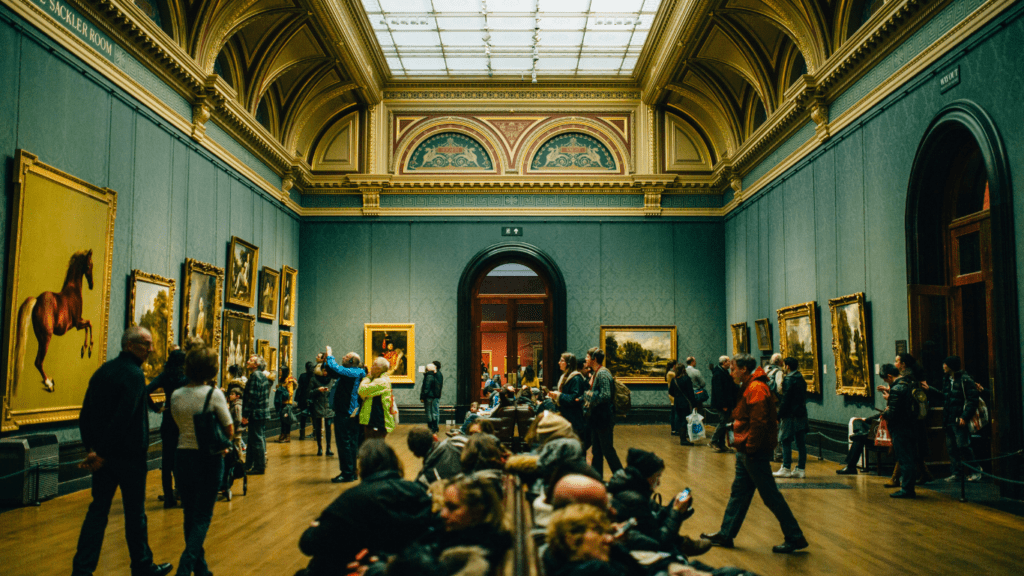Understanding Art Competitions
Submitting art to competitions can elevate your artistic career. Knowing the types of art competitions and their benefits helps artists make informed decisions.
Types of Art Competitions
Art competitions come in various forms:
- Juried Competitions: Expert judges select winning artwork. Examples include the American Watercolor Society Annual Exhibition and the BP Portrait Award.
- Open Call Competitions: Open to all artists regardless of expertise. Local arts councils often host these.
- Online Competitions: Require digital submissions. Examples include Artists Magazine Annual Art Competition and the Lumen Prize.
- Themed Competitions: Focus on specific themes. Examples include wildlife art competitions and portrait contests.
- Residency Competitions: Offer winners a chance to work in a new environment. Examples include Art Omi and Skowhegan School of Painting and Sculpture.
- Exposure: Increases visibility among art collectors and galleries. Winning or being shortlisted draws attention to your work.
- Feedback: Juried competitions provide valuable critiques. Constructive feedback helps artists improve.
- Networking: Connects artists with peers and industry professionals. Events often lead to future opportunities.
- Portfolio Building: Enhances your portfolio with recognized entries. Awards and recognitions add credibility.
- Motivation: Encourages continuous improvement. The competitive nature pushes for higher standards.
Preparing Your Art for Submission

Submitting art to competitions requires thoughtful preparation to ensure it stands out from the crowd. Careful planning, execution, and understanding of the competition guidelines are crucial.
Knowing Your Competition
Researching the competition provides valuable insights into the theme, judging criteria, and previous winners. I analyze these factors to tailor my submissions accordingly. Evaluating the competition’s history reveals trends and expectations, which helps in aligning my work with the judges’ preferences. Reading reviews and testimonials from past participants also helps me gauge the competition’s reputation.
Creating Standout Entries
Creating standout entries involves more than producing high-quality work. I focus on originality and creativity to capture the judges’ attention. Paying attention to detail in every aspect of the artwork, from concept to execution, ensures a polished submission.
I also consider the presentation of my work: high-resolution images, clear descriptions, and adherence to submission guidelines enhance my chances of success. Seeking feedback from peers or mentors provides an external perspective, helping to refine my entry further before submission.
The Submission Process
Submitting to art competitions can significantly impact your career. It’s essential to navigate each step correctly to maximize your chances of success.
Registering for the Competition
The first step is to register. Visit the competition’s official website. Look for registration instructions on the competition’s home page. Fill out the online form with accurate information. Pay any required entry fees using the accepted methods (credit/debit cards, PayPal, etc.). Save your registration confirmation for reference.
Typical Submission Requirements
Each competition has specific requirements. Common elements often include:
- Artwork Images: Upload high-resolution images (300 DPI) of your artwork, usually in JPEG or PNG format.
- Biography: Provide a brief biography, detailing your artistic background, influences, and achievements.
- Artist Statement: Write a concise artist statement explaining the concept and inspiration behind your work.
- Title and Description: Include the title, medium, dimensions, and a brief description of each piece submitted.
- Submission Form: Complete any additional submission forms required by the competition, ensuring all information is accurate and complete.
Double-check all elements against the competition’s guidelines to avoid disqualification.
After Submission: What to Expect
Submitting art to competitions can feel like an achievement, but it’s just part of the journey. Understanding what happens next helps prepare for the following steps.
Selection Process
Most competitions have a detailed selection process. Judges, who are often professionals in the art world, begin by reviewing each submission based on predefined criteria. Typically, they look for originality, technical skill, and conceptual depth. Depending on the competition’s rules, this process could take days or weeks. Some competitions provide updates on their websites, so I check regularly for any announcements.
Feedback and Results
Once the selection process concludes, results are usually posted online or sent via email. If my work is selected, I often receive further instructions regarding exhibition details or award ceremonies.
Regardless of the outcome, many competitions offer feedback from the judges. This feedback is invaluable, providing insights into my work’s strengths and areas for improvement. Whether accepted or not, this constructive criticism helps me grow and refine my artistic practice.
Leveraging Competition Experience
Participating in art competitions offers more than just exposure; it provides valuable lessons and career growth opportunities.
Learning from Feedback
Feedback from judges serves as a constructive tool to refine my skills. Analyzing comments on technical execution and creativity helps identify areas for improvement.
For example, judges may note inconsistencies in my brushwork, prompting me to practice smoother strokes. Integrating these insights into future works enhances my artistry. Seeking clarification on ambiguous feedback ensures I fully understand the critiques.
Building Your Artistic Resume
Winning or even participating in competitions boosts my artistic resume. Each entry, whether in local exhibits or international contests, adds credibility to my profile.
Listing awards and recognitions showcases my commitment and talent to galleries and clients. For instance, winning “Best in Show” at a regional art fair highlights my work’s impact. Including detailed descriptions of each competition and the pieces submitted provides a comprehensive view of my journey and growth as an artist.

 Anna Freehill, a key contributor to Avant Garde Artistry Hub, plays a vital role in shaping the platform’s vision. As an author and collaborator, she helps bridge the worlds of art and technology, offering insightful articles that guide artists through the rapidly evolving creative landscape. Anna’s dedication to highlighting art's therapeutic value has contributed to the platform’s focus on mental and emotional well-being through creative expression.
Her involvement in building Avant Garde Artistry Hub has been instrumental in providing valuable resources to artists seeking to enhance their careers. Whether through her writing on business strategies or her support in platform development, Anna is committed to fostering a space where artists can thrive and embrace the future of art.
Anna Freehill, a key contributor to Avant Garde Artistry Hub, plays a vital role in shaping the platform’s vision. As an author and collaborator, she helps bridge the worlds of art and technology, offering insightful articles that guide artists through the rapidly evolving creative landscape. Anna’s dedication to highlighting art's therapeutic value has contributed to the platform’s focus on mental and emotional well-being through creative expression.
Her involvement in building Avant Garde Artistry Hub has been instrumental in providing valuable resources to artists seeking to enhance their careers. Whether through her writing on business strategies or her support in platform development, Anna is committed to fostering a space where artists can thrive and embrace the future of art.